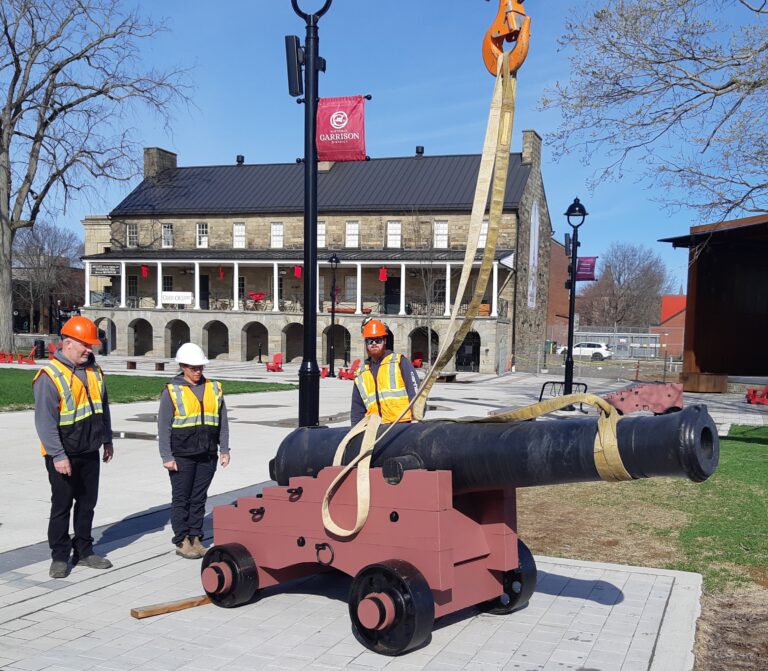November 11, 2018 will mark the 100th anniversary of the ending of the First World War. For this occasion, we took a look back on the lives and experiences of some of the 32 University of New Brunswick alumni who were killed in the war.
Lt. George Paget Owen Fenwick, 1882 – 1917
Born in Apohaqui, New Brunswick, George Fenwick began his studies at the University of New Brunswick in the fall of 1898 after having been awarded the Kings County Scholarship. He graduated in 1902 with honours in Natural Science and Chemistry before moving to Queen’s University for his post-graduate studies. He would eventually move onto Dalhousie Law School before settling into a position with the Department of the Attorney-General of Alberta where he would serve as solicitor to the Attorney-General.
On Aug. 28, 1916, Fenwick enlisted and was assigned to the 115th Battalion but was soon transferred to the Canadian Machine Gun Corps after his battalion was disbanded. His regiment was sent to France in May 1917, and he continued to serve over the next several months as a member of the 7th Machine Gun Company. On Oct. 30 1917, Lt. Fenwick was killed in action at the age of 35 when he and his battalion came under heavy artillery fire while taking part in a machine gun barrage during the infamous Battle of Passchendaele. While his body was never recovered he was memorialized at the Menin Gate Memorial to the Missing in Ypres, Belgium.
In a 1926 issue of The Brunswickan, Fenwick’s former commanding officer spoke about the character of his late soldier, saying, “We were all very much affected by the death of Mr. Fenwick, for he was so keen, so full of enthusiasm, and a most likeable man. As he was in civic life, prominent in his profession, so he was out here a most efficient and courageous officer. He was always thorough, and everything that was given him to do was done well and in a most cheerful spirit. The army lost one of a kind we can ill-afford to lose.”

Major John Hales Sweet, 1878 – 1917
The son of an archdeacon, John Sweet was born in the town of Dalhousie, N.B. in Oct. 1878, and grew up in Miramichi where he attended Harkin’s Academy. He was considered a natural leader whose friendly demeanour, resilient optimism and unflinching courage earned the respect and confidence of those around him in all facets of his life.
Sweet completed his Bachelor of Arts at UNB in 1899, serving as the valedictorian of his class while also working as an editor for The University Monthly. After graduating, he moved with his family to Victoria, B.C. where he began studying law and ultimately formed his own law firm. When he wasn’t studying or working, Sweet lived an active life and participated in several different outdoor sports including canoeing.
Sweet enrolled in the military in 1915 and was assigned to the 72nd Battalion where he quickly ascended through the leadership ranks from lieutenant to captain to major. He and his battalion spent months fighting on the front lines in France before his exemplary leadership qualities once again earned him the possibility of a promotion as he was chosen along with 12 other officers to begin training for higher positions within the army.
Major Sweet rejoined his troops on the battlefield on the Somme in January 1917. He was killed mere months later on April 9 while leading an attack during the battle of Vimy Ridge. According to the accounts of the soldiers serving alongside him, Sweet had been wounded in the arm early in the assault but refused to leave the battlefield to receive treatment, telling those advising him to leave, “No, I am going on with my men.” He managed to lead his battalion up to the first German trench line before he was killed instantly by a piece of shrapnel as he waved his troops on.
Famed Canadian General Arthur Currie referred to Sweet as an “old and dear friend… regarded by all as an officer of outstanding promise.” This sentiment was supported by a member of Sweet’s battalion who said after the battle, “We were all very sorry to lose such a brave man and so fine an officer. His bright and cheerful manner and his bravery won the admiration of every man and officer.”
Major Rainsford Hannay Winslow, 1887 – 1918

Rainsford Winslow was a Fredericton local who enrolled at UNB in the fall of 1904 before transferring to McGill University in 1906 to finish his Bachelor of Science degree in Mining Engineering. After graduating in 1909, Winslow moved to British Columbia where he began his career working as a land surveyor.
Shortly after the breakout of the war in 1914 Winslow expressed a desire to return to New Brunswick and enlist in the military but was temporarily convinced to stay by his employers who did not want to lose the skilled, young worker. However, this would be short lived – by the end of the year he had joined the 48th Battalion of the Canadian Expeditionary Forces and was sent to Britain to begin his service. In 1916, shortly after receiving a promotion to captaincy, Winslow was wounded twice in the same day by pieces of shrapnel but continued to fight. It was this type of leadership that earned him a promotion to the rank of major in 1918, placing him in command of approximately 800 soldiers.
Major Winslow died on Sept. 9, 1918, four days after being wounded by a shell during combat in Northern France. He was the second member of his family to be lose their life in the war after his older brother J.A. Winslow was killed in France the year prior.
Frank Harvey Tingley, 1890 – 1918
Frank Tingley was born in the small New Brunswick community of Point de Bute and grew up in Moncton before enrolling at UNB in 1906 to complete his Bachelor of Science degree in Civil Engineering. Tingley was a well liked student who was known for his reserved and modest demeanour. Outside of the classroom, his friends knew him as a talented pianist and an enthusiastic participant in a range of student activities on campus, such as the university glee club of which he was a member throughout his time at UNB.
After graduating in 1910, Tingley found work as a civil engineer until the outbreak of war led him to volunteering as a lieutenant with the 3rd Field Battery of the Canadian Expeditionary Forces. The young soldier’s service began in England in 1914 before being moved to France the following year. In May of 1915, Tingley was struck in the knee during combat on the battlefields of Ypres – a wound which would force him to temporarily return to his hometown of Moncton to recover. The military recognized the bravery Tingley showed during the battle by awarding him the Military Cross. He briefly returned to the frontlines in Jan. 1916 but was wounded again months later and once again returned home to recover. This time the injured lieutenant was offered the opportunity of a staff position that would allow him to remain in Canada. However, he refused this offer and instead requested to be allowed to return to combat.
On Sept. 5, 1918, Tingley was gravely injured by a bomb. Despite the severity of his injuries he managed to survive for over a month and even showed signs of potentially being able to recover before he finally succumbed to his injuries on Oct. 14, passing away at the age of 28.

Robert Kilgour Shives, 1891 – 1916
Hailing from Campbellton, N.B., Robert Shives began attending UNB in 1909 to study forestry. By pursuing a career in the forestry industry, he was following in the footsteps of his late father who was a successful lumber merchant before being killed by a misfiring rifle while hunting in 1905. The younger Shives began his forestry career shortly after his graduation in 1913 but the beginning of the war made him want to set his burgeoning career aside in order to join the fight.
Shives originally volunteered to join the military in 1914 but was rejected due to physical limitations caused by an ankle injury he received doing forestry work. Still determined to do what he believed was his duty, Shives travelled to Toronto and began taking an aviation course which he paid for entirely out of his own pocket. His newfound abilities as a pilot allowed him to finally get accepted into the military as a member of the Royal Flying Corps and before long he had joined the fighting in Ypres where his seemingly natural talent for flying allowed him to quickly rise through the ranks to the position of captain.
In the spring of 1916, Shrives was severely injured in a dogfight against a German plane but still managed to fly his plane over 25 miles back to safety. He was sent back home to Canada for several months to recover but returned to active duty in August of that year. The young Captain was killed in a tragic accident less than a month later when a machine gun that he was examining inadvertently discharged.




